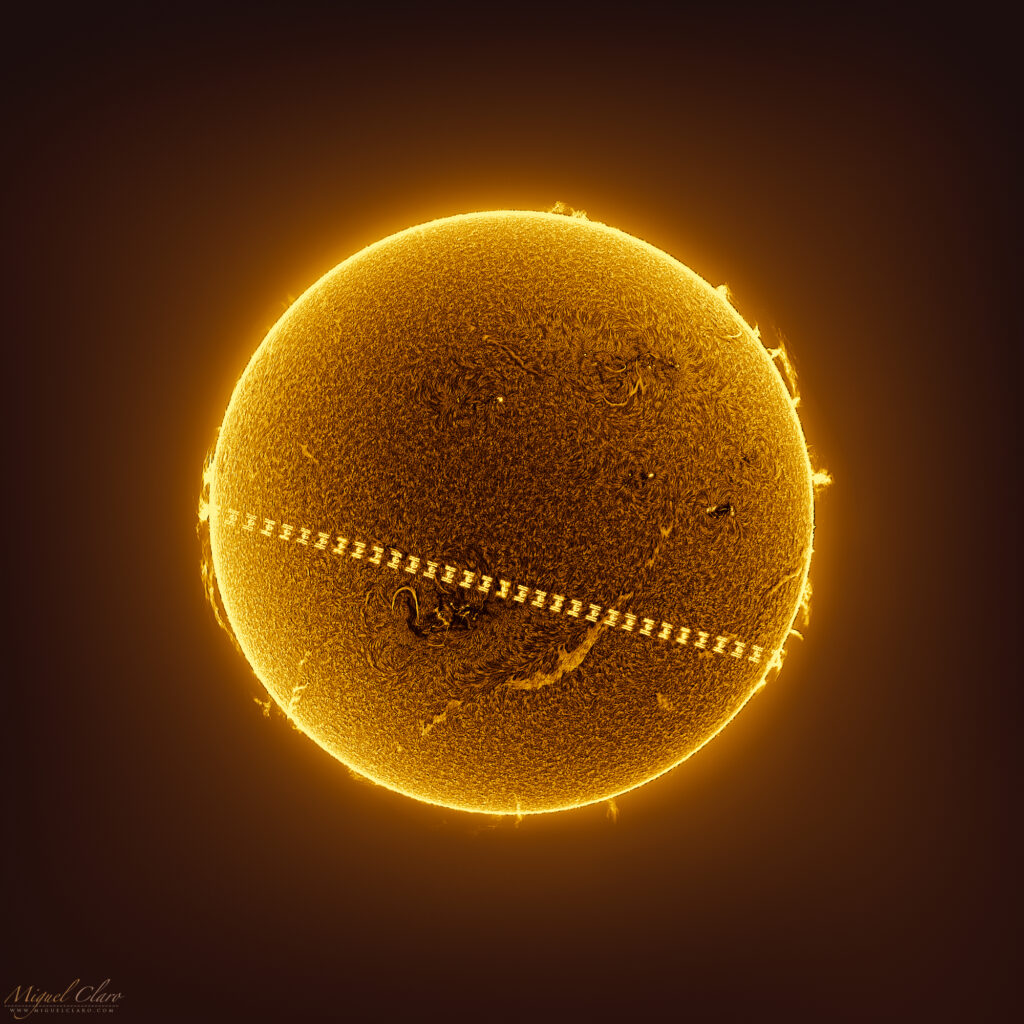Portuguese astrophotographer Miguel Claro has published a breathtaking timelapse. It shows the ISS transit against the background of the solar disk.
The ISS transit against the Sun is difficult to see even with a special telescope equipped with hydrogen filters. So Claro used an Apollo-M Max high-speed camera with its shutter set to take 116 pictures per second. It was photographed in northern Portugal on June 2, 2024. The total duration of the transit was only 0.54 seconds.
The resulting images were processed individually. In the first image sequence, the ISS is visible in white color, which is explained by the use of the inversion technique for deeper processing of images of the Sun’s chromosphere. In the second sequence, the ISS is seen in black, without this inversion.
Interestingly, individual elements of the ISS, including its solar panels and modules, can be distinguished in the images. Also clearly visible are jets of gas in the Sun’s outer atmosphere, a large gas filament and a large active region (sunspot), as well as several prominences around the limb.

The ISS makes a complete orbit around the Earth every 90 minutes. Its width is 109 meters. Even though the ISS is quite not small in the sky and has an angular size of 62.58 seconds, it seems very small compared to the enormous size of the sun’s disk, which has an angular size of 31.6 minutes. Thus, in the Earth’s sky, the Sun looks 30.3 times larger than the ISS.
We previously told you about how astrophotographer Andrew McCarthy captured the epic Strawberry Moonrise.


